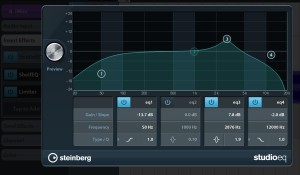 One of the most difficult aspects of music production is getting caught in all of the small detail that can keep you working on a song for much longer than anticipated. This is something that I like to call the music producer’s “black hole.” A producer’s “black hole” is something that all young producers have a problem with these days. They will spend hours trying to perfect a synth or kick drum, which ends up wasting time and energy. One method that a lot of producers use is to split up your music production in three deferent processes.
One of the most difficult aspects of music production is getting caught in all of the small detail that can keep you working on a song for much longer than anticipated. This is something that I like to call the music producer’s “black hole.” A producer’s “black hole” is something that all young producers have a problem with these days. They will spend hours trying to perfect a synth or kick drum, which ends up wasting time and energy. One method that a lot of producers use is to split up your music production in three deferent processes.
The first process is the creation. This is when you first start out, figuring out which instruments, synths, and drums you will be using for your song. Get creative with your sound design and focus more on the structural elements rather than how the sounds are meshing together during the first process. Three main questions to consider are:
What kind of emotion do you want to evoke?
What tempo and energy level do you want to have?
What are the main sounds that you want to focus on?
The second process is the mixdown. This portion of the production process can easily take up a lot of time during the creative process. When you find yourself tweaking small aspects during the creative process; stop, remember the three separate processes, and continue with the sound creation. It’s important to let your song sit for a while after the creative process, so the producer can listen to his creation with fresh ears and a new perspective. The main audio effects that a producer focuses on during the mixdown are the volume levels, compression, and EQ.
The third and final process is the mastering. Normally producers do not do their own mastering. If you are a producer that does his or her own mastering, then you are repeating the steps before the mixdown. Save the mixed track, so you don’t get lost between mixing and mastering.
 Emphasize What Matters: Open up your equalizer and figure out where the meat of each sound sits. You’ll notice that your sub-bass peaks at the very low end of the spectrum so any high end frequencies you let through are not serving a useful purpose. In fact, they’re just taking up space and competing with your other sounds. Similarly, any low frequencies you let through from your hi-hat track are just going to interfere with your lower sounds, resulting in a muddy mix. Go one by one through your tracks and carve out unnecessary frequencies to give each track its own space to shine.
Emphasize What Matters: Open up your equalizer and figure out where the meat of each sound sits. You’ll notice that your sub-bass peaks at the very low end of the spectrum so any high end frequencies you let through are not serving a useful purpose. In fact, they’re just taking up space and competing with your other sounds. Similarly, any low frequencies you let through from your hi-hat track are just going to interfere with your lower sounds, resulting in a muddy mix. Go one by one through your tracks and carve out unnecessary frequencies to give each track its own space to shine.